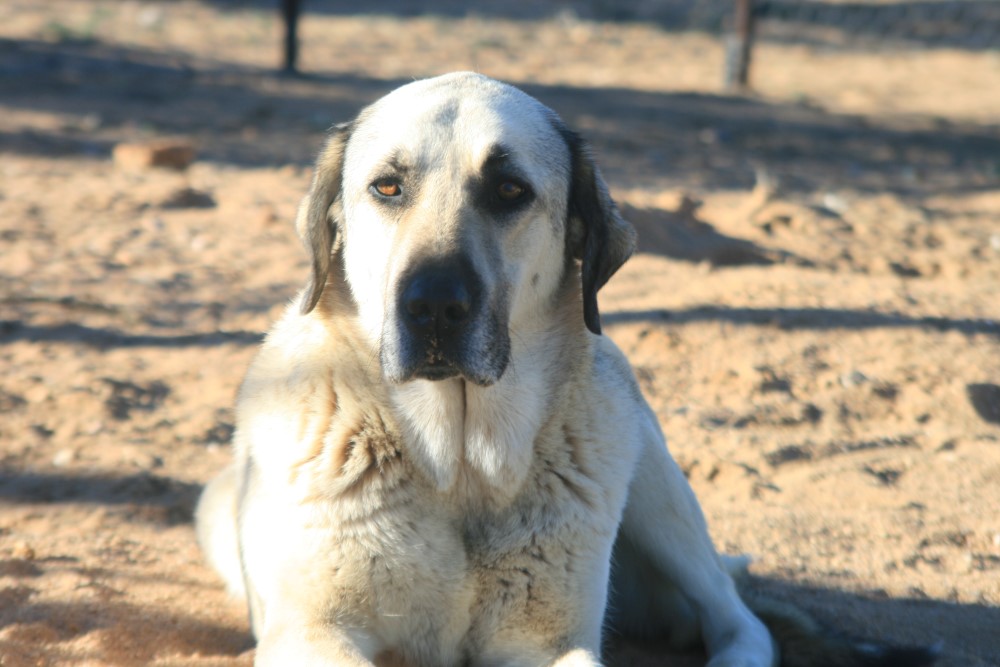The Namaqualand region of the Northern Cape is known to nature lovers and outdoor enthusiasts for spectacular displays of flowers in the spring season, when the famous and eye-catching Namaqua daisies are in full bloom. What is probably less known is that the area is one of the driest in South Africa, making this a harsh environment a significant part of the year, particularly for livestock farmers. Drought, disease, toxic plants and predators are some of the challenges that farmers face in this succulent biodiversity hotspot. A preliminary camera trapping survey carried out by the Cape Leopard Trust in 2008-2009 showed that leopards, caracals and black-backed jackals inhabit part of the region and discussions with farmers revealed that predation can be an important cause of livestock mortality in the area.
Recognising the need to minimise depredation while conserving biodiversity, SANParks (Namaqua National Park) started a successful Anatolian Dog Breeding Project (http://www.anatoliandogs.co.za/), distributing Anatolian dogs to farmers in Namaqualand and further afield. The presence of the Dog Breeding Project in Namaqualand was an ideal setting for starting a research project on the effectiveness of Anatolian dogs at protecting livestock from predators. The Anatolian dogs have been highly effective at protecting flocks against cheetahs in Namibia. In Namaqualand cheetahs do not exist anymore, but the presence of leopards, caracals and jackals would certainly challenge the guardian dogs. After a lengthy planning process, the Cape Leopard Trust and Conservation South Africa started a project to test the efficiency of Anatolian dogs as well as dog and Eco-Ranger combinations at protecting livestock. We are very fortunate to have SANParks onboard as a partner and 8 Anatolian puppies were donated to farmers in the study area as part of the research project.
The puppies were introduced to farms in July when they were 7 weeks old. Each puppy was allocated a small flock of 5 adult goats or sheep and 5 kids or lambs. The puppies spent the first couple of months in kraals located on participating farms, which enabled them to bond with the livestock. Now that they have gained sufficient strength and confidence the puppies and their small family of sheep or goats are making day excursions into small camps and return to the kraal at night. On some farms the dogs and small flock are accompanied by Eco-Rangers during their daily excursions. For the next couple of months the dogs and small flocks will return to the kraal at night until the dogs are ready to stay in the veld overnight. The Eco-Rangers return to their homestead in the evening and reunite with the dogs in the morning to spend the day with the flocks.
The puppies have integrated well with goat as well as sheep flocks, including Dorper and fat tail sheep, such as Damara and Meatmaster. In fact, puppies prefer to stay with the flock rather than greet people on foot or vehicles passing by. On some occasions they even barked at the strangers passing by their flocks! The next big steps for them and for the project will be for the dogs to bond with the rest of the flock, start using large camps and remain in the field at night. This is essential because on commercial farms the flocks are often not kraaled at night, which may make them more susceptible to predation. A major component of the project involves investigating predator ecology on commercial farms using camera traps, GPS collars on predators and predator diet analysis. This work is carried out simultaneously with the dog and Eco-Ranger timeline and will enable researchers to quantify predation levels with and without Eco-Rangers and guardian dogs.
Thus far we are excited to report that the puppies have adjusted well to their new livestock families and appear happy to explore small camps in the vicinity of the kraals. Tick bites have bothered a couple of the puppies and have required veterinarian attention, but prompt monitoring by the Eco-Rangers has gone a long way to help detect issues rapidly.
Thanks to a very generous donation from Nola and Foodcorp, dog food was provided in 2014 for our fast-growing Anatolian puppies. These are large dogs and still growing and gulping a lot of food, which is also now required for 2015 as the research project continues. If the dogs are successful at limiting livestock losses to predators on their own and/or in conjunction with Eco-Rangers, then this could be a potential solution to eliminating the need for other less environmentally friendly farmer management practices. As with any research based project we need support to continue with this valuable work. Please contact us via our website if you are able to offer support or input: http://predator-coexistence.squarespace.com


















